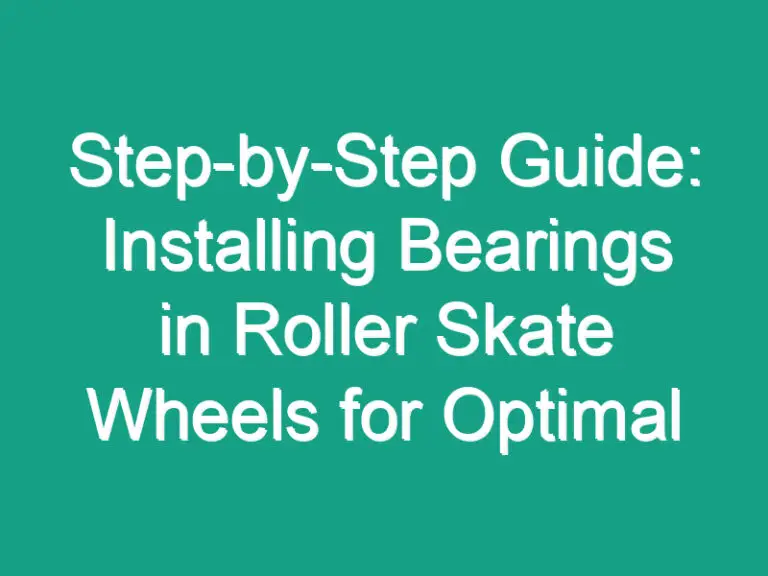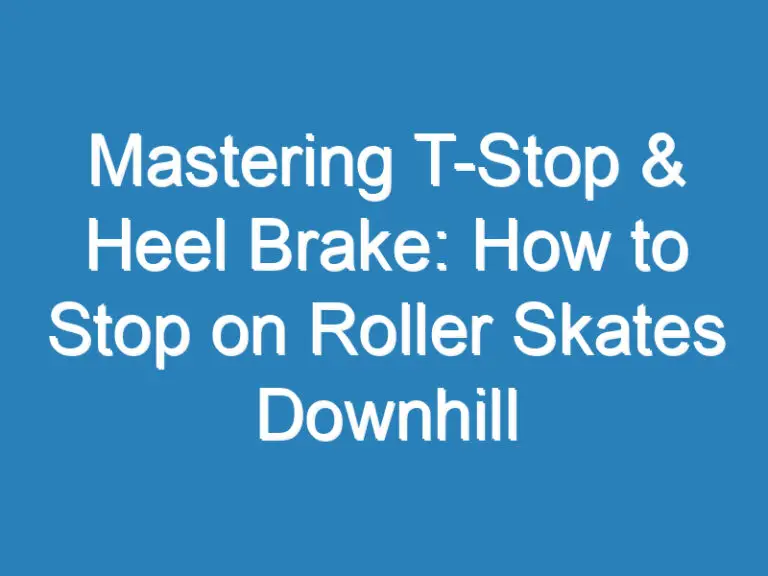
Excited to share my expertise on how to tow a wakeboarder! As a seasoned wakeboarding enthusiast, I’ve picked up some valuable tips and tricks along the way. Towing a wakeboarder might seem daunting at first, but with the right guidance, it can be a thrilling experience for both the rider and the driver.
Key Takeaways
- Select a boat with factors such as size, speed control, towing capacity, wakeboard tower, and maneuverability to ensure a safe towing experience.
- Choose a rope that’s at least 55 feet long made from durable materials with a comfortable grip handle for efficient towing.
- Ensure the wakeboarder wears a properly fitted life jacket, knows the correct body position, communicates with hand signals, checks equipment, and warms up before the ride.
- Understanding and using hand signals like thumbs up, thumbs down, wave off, and pointing helps facilitate clear communication during the ride.
- Prioritize safety precautions such as wearing a life jacket, checking equipment, establishing communication, staying alert, monitoring speed, and avoiding crowded areas for a secure wakeboarding experience.
Selecting the Right Boat
When it comes to towing a wakeboarder, choosing the right boat is crucial to ensure a smooth and enjoyable experience. Here are a few key factors to consider when selecting the ideal boat for towing a wakeboarder:
- Size: Opt for a boat that is powerful enough to create the necessary wake for wakeboarding. A larger boat with a V-drive configuration is often preferred for its ability to generate a larger wake.
- Speed Control: Look for a boat equipped with a speed control system. This feature allows you to maintain a consistent speed, which is essential for wakeboarding.
- Towing Capacity: Ensure that the boat has a sufficient towing capacity to handle the weight of the wakeboarder and any additional gear or passengers on board.
- Wakeboard Tower: A wakeboard tower is essential for attaching the tow rope at a higher point, which can result in better leverage and higher jumps for the wakeboarder.
- Maneuverability: Choose a boat that is easy to maneuver, especially in tight spaces or crowded waterways. This will make it easier for you to navigate and pick up fallen wakeboarders quickly.
When selecting the right boat for towing a wakeboarder, prioritize factors such as size, speed control, towing capacity, wakeboard tower, and maneuverability to ensure a safe and exhilarating experience on the water.
Choosing the Right Rope and Handle
When choosing a rope and handle for towing a wakeboarder, it’s essential to consider the following factors:
- Rope Length: Opt for a rope that’s at least 55 feet long to provide ample slack for the wakeboarder.
- Material: Look for a rope made from durable materials like polyethylene, capable of withstanding the rigors of wakeboarding.
- Handle Grip: Ensure the handle has a comfortable grip, preferably with EVA foam for a secure hold.
- Handle Size: Select a handle with the right size that fits comfortably in your hands for better control while towing.
- Floatation: A handle with floatation capabilities is ideal for easy retrieval if it gets dropped in the water.
Once you have the right rope and handle, you’re well-equipped to tow a wakeboarder efficiently and enjoy a seamless experience on the water.
Preparing the Wakeboarder
When Preparing the Wakeboarder for an exciting ride, it’s essential to ensure they are equipped with the right gear and knowledge. Here are some key steps to get the wakeboarder ready:
- Safety First: I always emphasize the importance of wearing a properly fitted life jacket. Safety should never be compromised when engaging in water sports.
- Proper Body Position: Before the ride, I make sure the wakeboarder knows the correct body position to maintain balance and control on the water.
- Communicate Signals: Clear communication is key. I always establish hand signals or verbal cues with the wakeboarder to ensure a smooth towing experience.
- Check Equipment: Before hitting the water, I double-check all equipment, including the wakeboard bindings and any other gear to avoid any issues during the ride.
- Warm-Up and Stretch: I recommend the wakeboarder to do some warm-up exercises and stretching to prevent injuries and enhance performance.
By following these steps, the wakeboarder can be fully prepared and ready for an exhilarating experience on the water.
Understanding Hand Signals
When towing a wakeboarder, clear communication is key to ensuring a safe and enjoyable ride. Hand signals play a crucial role in conveying messages between the rider and the driver of the boat. Here are some essential hand signals to understand:
- Thumbs up: Everything is good, speed is right, or pick up the pace.
- Thumbs down: Slow down or stop.
- Wave off with hand: Stop immediately.
- Pointing to the right or left: Indicating the direction to turn.
Using hand signals helps in avoiding verbal miscommunication due to the noise of the boat engine and wind. As the rider, knowing and responding promptly to these signals enhances the overall experience and safety during the ride.
Remember, practice these hand signals with your boat driver before hitting the water to ensure smooth coordination during your wakeboarding session.
Safety Precautions
When towing a wakeboarder, safety should always be the top priority. Here are some essential precautions to ensure a smooth and secure wakeboarding experience:
- Life Jacket: I always make sure the wakeboarder wears a properly fitted life jacket. It’s crucial for buoyancy and safety in case of a fall.
- Check Equipment: Before hitting the water, I meticulously inspect all equipment, including the boat, ropes, and handle. Ensuring everything is in top condition prevents any unexpected mishaps.
- Establish Communication: Clear communication between the wakeboarder and the boat driver is key. We establish hand signals like thumbs up for speed, thumbs down for slowing down, waving off to stop immediately, and pointing to indicate direction. Practicing these signals beforehand enhances coordination and safety on the water.
- Stay Alert: I always remain alert and focused while towing a wakeboarder. Being attentive allows me to anticipate any changes in the water conditions or the wakeboarder’s actions.
- Monitor Speed: Adjusting the speed of the boat according to the wakeboarder’s comfort level is crucial. Gradually increasing speed as the wakeboarder gains confidence ensures a more enjoyable experience.
- Avoid Crowded Areas: I steer clear of crowded and high-traffic areas when towing a wakeboarder. Having ample space to maneuver reduces the risk of collisions or interference with other water enthusiasts.
Incorporating these safety precautions into your wakeboarding routine ensures a thrilling yet secure time on the water.
Conclusion
Ensuring safety is paramount when towing a wakeboarder. From the importance of a well-fitted life jacket to clear communication and vigilant monitoring, following these guidelines guarantees a fun and secure wakeboarding session. Remember to check equipment, use hand signals, and adjust speed accordingly. By avoiding crowded areas and gradually increasing speed, both the wakeboarder and the driver can enjoy a safe and exhilarating experience on the water. Prioritizing safety measures enhances the overall thrill of wakeboarding, making it a memorable adventure for everyone involved.
Frequently Asked Questions
Can you explain the importance of safety precautions when towing a wakeboarder?
When towing a wakeboarder, safety precautions are crucial to prevent accidents and ensure a secure experience. This includes wearing a properly fitted life jacket for buoyancy and protection, checking all equipment before starting, establishing clear communication through hand signals, staying alert to anticipate changes, monitoring speed based on the wakeboarder’s comfort level, avoiding crowded areas for maneuverability, and gradually increasing speed for an enjoyable yet safe wakeboarding session.
Why is wearing a properly fitted life jacket essential when wakeboarding?
Wearing a properly fitted life jacket is crucial when wakeboarding as it provides buoyancy and safeguards the wakeboarder in case of falls or accidents. The life jacket helps the individual stay afloat effortlessly, reducing the risk of drowning and ensuring their safety throughout the wakeboarding session.
What role do hand signals play in wakeboarding safety?
Hand signals in wakeboarding play a vital role in ensuring clear communication between the boat driver and the wakeboarder. By using predefined hand signals, both parties can convey important messages and instructions effectively, enhancing safety on the water. It helps in signaling turns, speed adjustments, and alerts, enabling seamless coordination and reducing the likelihood of miscommunication or accidents.
How should the boat driver adjust the speed based on the wakeboarder’s comfort level?
The boat driver should monitor the wakeboarder’s comfort level and adjust the speed accordingly to ensure a safe and enjoyable experience. By maintaining a speed that aligns with the wakeboarder’s skills and preference, the driver can enhance the rider’s performance while minimizing the risk of mishaps or falls. Adapting the speed based on the wakeboarder’s comfort promotes a smoother ride and allows for better control and maneuverability on the water.
Why is it recommended to avoid crowded areas when wakeboarding?
Avoiding crowded areas when wakeboarding is essential to ensure safety and maneuverability on the water. By steering clear of densely populated waterways, the wakeboarder and boat driver can minimize the risk of collisions, reduce distractions, and focus on enjoying a more controlled and uninterrupted ride. Choosing less congested areas for wakeboarding allows for greater freedom of movement, improved visibility, and a safer environment for both the participants and other water users.
How can gradually increasing speed enhance the wakeboarding experience?
Gradually increasing speed in wakeboarding can enhance the overall experience by providing a gradual transition for the wakeboarder to adapt and improve their skills. By starting at a comfortable speed and progressively ramping up the velocity, the rider can build confidence, master new techniques, and enjoy a more thrilling ride on the water. The incremental speed adjustments allow for a smoother progression, enabling the wakeboarder to experience a sense of accomplishment and exhilaration while maintaining control and safety throughout the session.

Hi, This is Roasalin, I have loved Skating since my early childhood days, and here I share my experiences and tips for beginners who want to turn into pro skaters. I hope you find it useful. you can contact me here






